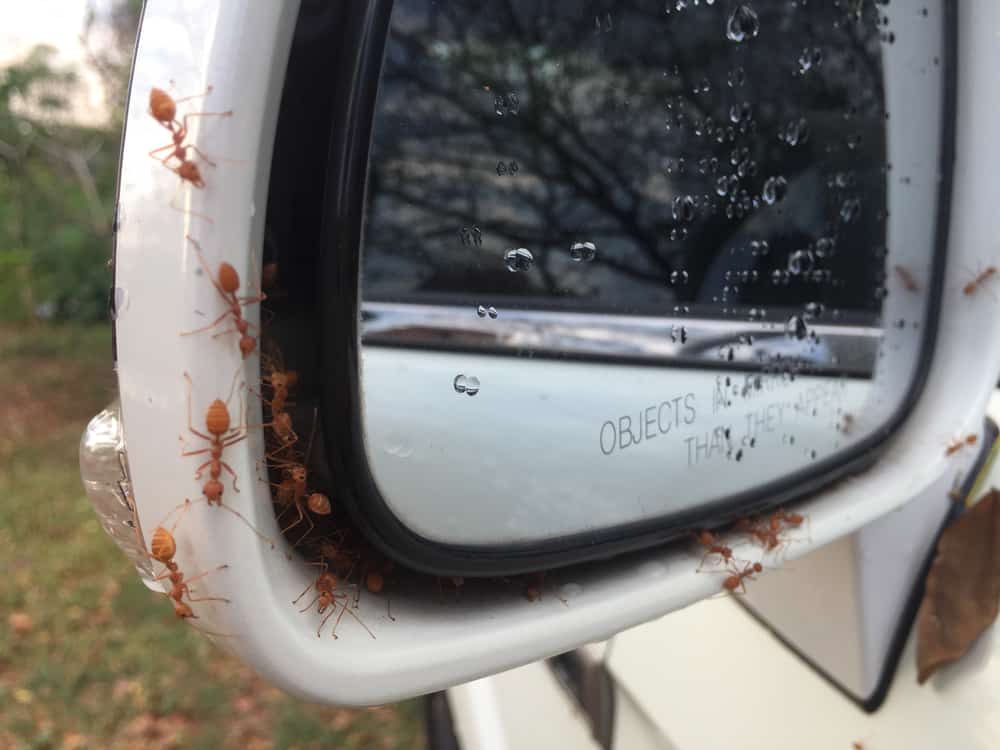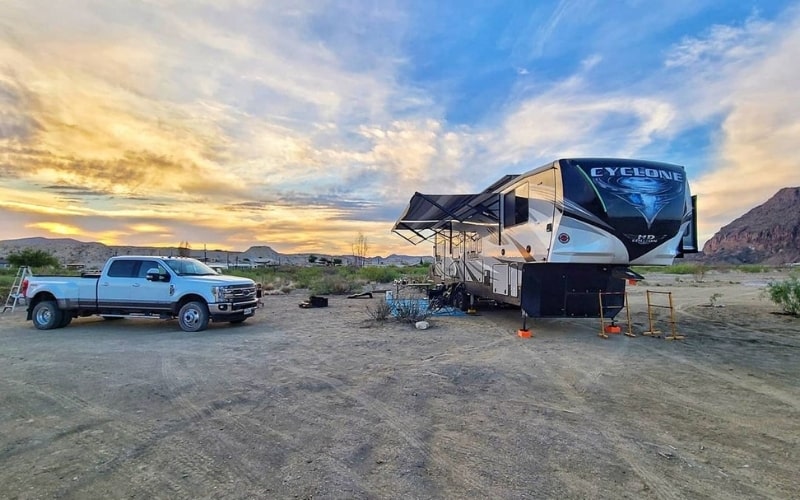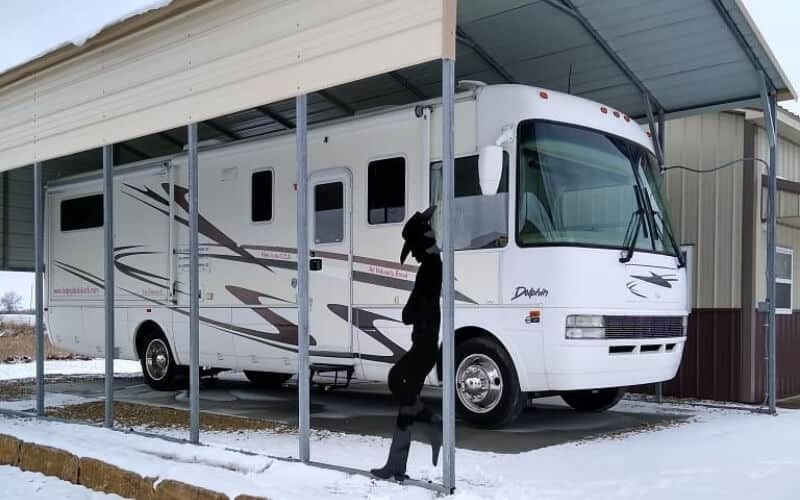Ensuring proper heat generation and insulation when traveling by RV in winter is important. Insulation ensures that when you heat your RV, the heat remains inside. So, you have to identify gaps in your RV and seal them. Weather strips around doors and windows are crucial for keeping the heat in. This is why you need to inspect them before you start traveling. Carpet on the floors is a great way of keeping your feet warm inside your RV.
I always relish relaxing in my RV with a warm cup of chocolate while admiring snow-covered scenery. However, a warm cup of chocolate is only one of the ways I keep myself warm when traveling by RV. Over the years, I have discovered many ways to ensure my RV remains warm even on the coldest days.
So, I’m here to share some of my tried-and-tested techniques to keep your home-on-wheels warm even when the temperature drops after traveling countless miles and a fair share of chilly evenings. Let’s explore effective ways to heat your RV without any further delay if you’re prepared to set out on a cozy and exciting adventure. Let’s keep up with the chilly air and make warm and unforgettable memories!
Features Of An RV To Battle Against Cold
Let’s look at the amenities that turn your RV into a warm refuge that can withstand even the coldest nights.
Insulated Walls
Insulation is a hidden weapon concealed behind the walls of your RV. When done properly, insulation keeps warm air inside and cold air outside. It’s like a warm blanket wrapped around your RV.
A pleasant temperature is maintained by carefully placing high-quality insulation materials in walls, floors, and ceilings to reduce heat transfer. Another important factor is preventing drafts and retaining heat through thermal curtains and insulated windows.
Variety Of Heating Systems
Your dependable RV has heating systems to meet your tastes and requirements. Every method has its advantages, from electric heaters to gas furnaces. Electric heaters are convenient and silent, whereas propane furnaces provide effective heating through a combustion process.
Pumps that can heat and cool your room are available in some RVs. Cold air must be drawn in, heated, and distributed throughout the RV for these systems to function.
Double-Paneled Windows
Consider double-pane windows as the comforters for your RV. In double-pane windows, an insulating layer of air or gas is sandwiched between two layers of glass. This insulation separates the warm air inside your RV and the chilly outside air, keeping the warmth inside.
Programmable Thermostats
The personal temperature expert in your RV is a programmable thermostat. You may create a heating plan that suits your tastes with programmable thermostats. When you go exploring, you can set the thermostat to a lower setting, and when you come back, it will be warm and cozy.
Some programmable thermostats even allow you to change the temperature using a remote control and a smartphone. This keeps you cozy while conserving energy by only heating the area when necessary.
Skirting System
Skirting is handy in chilly climates when you must park for a long time. Skirting is the process of insulating the base of your RV with material to form a barrier against the chilly air that may seep underneath. This easy tip contributes to consistent indoor temperature maintenance and lessens the demand on your heating system.
Tank Heaters
Remember your water and holding tanks and tank heaters! Tank heaters, which keep these vital systems from freezing in cold weather, are common in RVs. When temperatures dip, these heaters are a warm embrace for your tanks, keeping your access to running water and working waste systems open.
There you have it, a collection of attributes working as a team to combat the chill and keep you toasty in your mobile home. Your RV can handle even the coldest of trips, from insulation and windows to innovative technology and heating systems.
Essentials To Heat Your RV
Having traveled in my RV for many years, I have discovered the most effective essentials to keep me warm no matter how cold it gets. Here are a few:
Warm Bedding And Blankets

Warm bedding and blankets are your first line of protection against the cold. Your bed is your haven. Bring warm, thermal blankets that will help you stay warm at night.
Layering is crucial; use a down comforter and flannel sheets for optimal warmth. I like to carry my electric blanket, which controls the warmth while sleeping to make the chilly nights comfortable.
Warm Clothing
Dress for the cold by layering on the layers! I always pack my cozy sweaters, thermal underwear, fleece-lined pants, and dry-fitting socks. These items assist me in maintaining body heat while staying warmly clad by forming a thermal barrier between me and the chilly air outside.
Space Heaters
Space heaters provide precise localized warmth. The primary heating system in your RV is a perfect complement to electric space heaters.
Choose the one that best fits your space from the available sizes and types. I use the EAST OAK Patio Heater for my RV as it is the perfect companion that satisfies all my needs. This is the best way to heat a small room. Just remember to use them responsibly and never leave one unattended.
Hot Water Bottle
Hot water bottles are simple but efficient. Before going to bed, put a hot water bottle in your bed. Your bed will feel especially warm thanks to the nightly flow of moderate heat. It’s a cost-effective method of staying warm that doesn’t exclusively rely on heating systems.
Insulated Water Hose
The water supply in your RV can suffer greatly in cold weather. Water is kept from freezing while being transported or at the campsite thanks to an insulated water hose. It guarantees access to running water even on chilly days, greatly simplifying daily tasks.
Caulking and Sealant
In the fight against cold drafts, gaps, and cracks are your adversaries. Keep caulk and sealer on hand to close gaps in windows, doors, and storage spaces. This keeps cold air out and improves the efficiency of your RV’s heat retention.
Weatherproofing Tape
Another useful item to keep in your toolbox is weatherproof tape. Sealing gaps around windows and doors with weatherproof tape keeps moisture and chilly air out of your warm home. It’s a quick and temporary solution for areas requiring immediate treatment.
Thermos and Hot Drinks
Warm beverages not only make you feel more comfortable, but they also work to warm your body from the inside out. Bring a thermos of your preferred hot drink, such as tea, coffee, or hot chocolate. Warm beverages may make a chilly day feel much more pleasant.
If you have these necessities, you’ll be ready to face cold weather head-on and make the most of your RV trip regardless of the weather. Keep warm and enjoy the wonders of wintertime activities!
Sometimes, I go on longer trips in my RV, for which I need something more efficient. I depend on solar-powered space heaters for such cases. So, if you are looking for something similar, keep reading.
Solar Powered Space Heater
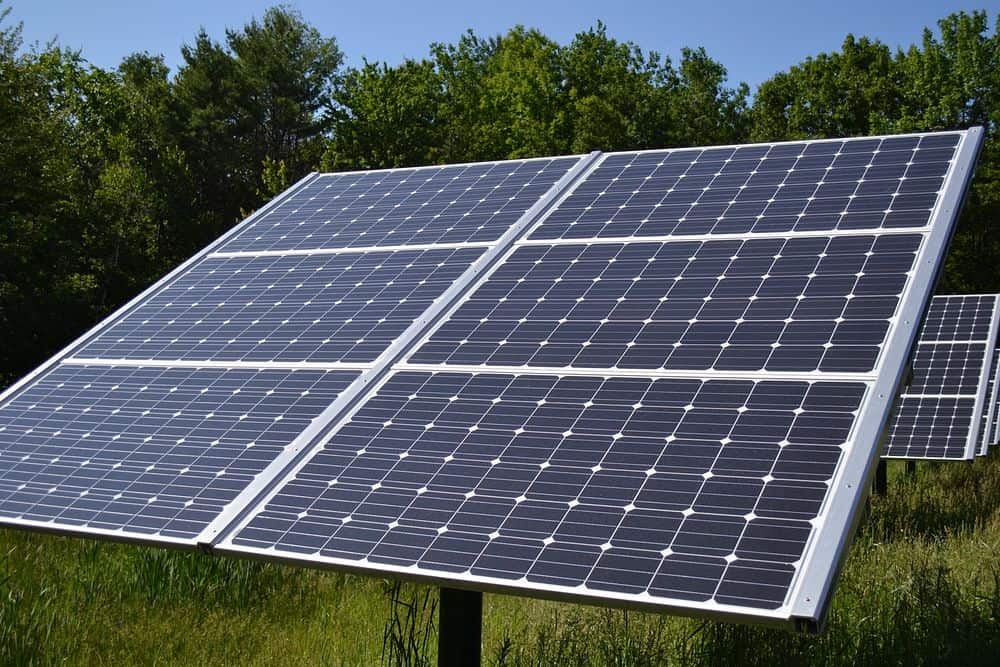
You can use the sun’s energy to heat your RV with the help of solar panels, which use sunlight to create electricity. You may then use this electricity to power various products such as space heaters.
Solar-powered space heaters for camping combine the comfort and warmth of a space heating system, which also favors the environment.
Although dependable, it’s important to realize the difficulties in correctly building a solar space heater. These are the problems you might face when using a solar-powered space heater:
- Space heaters can take a lot of energy to provide heat. You would need many solar panels and an energy storage system to operate it smoothly.
- Solar panels’ output might change depending on the weather, the time of day, and the panels’ efficiency. Hence, the energy generation might need to run a space heater more efficiently.
- Battery-based energy storage technologies would be required to maintain a constant heat source, increasing complexity and expenses.
- Converting solar electricity into heat can be challenging. Direct-current electric space heaters may not be the most energy-efficient technique to heat with solar energy.
- Given the power requirements of a space heater, it could be challenging to construct solar panels that can fit on an RV’s roof or in the RV’s constrained space.
- When considering the cost of solar panels, batteries, and other equipment, setting up a system that successfully uses solar energy to power a space heater may be expensive.
Think carefully about whether a solar-powered space heater is the best option for you. It makes more sense to use solar energy to power other vital RV systems, such as lights and appliances, while relying on conventional heating techniques, such as propane or electric heaters, to keep your RV warm and cozy.
Risks Associated With RV Travel In Cold Weather
It might be unpleasant to talk about dangers, but it’s necessary to do so to be aware of possible threats and be well-prepared.
Here are some of the risks linked to traveling by RV in cold weather:
| Problem | Details |
| Frozen pipes and tanks | In the cold, water storage tanks and pipelines may freeze, leading to plumbing issues and possible damage. Frozen pipes inside the RV could burst, resulting in leaks or flooding. |
| Heating system failure | If the heating system in your RV malfunctions or runs out of gas, you might not have a reliable heat source. This is not only uncomfortable but dangerous in really cold conditions. |
| Condensation | Your RV can suffer from condensation during cold weather if the ventilation is insufficient. It can increase moisture, causing mildew and rust to grow inside your RV, which can cause damage. |
| Limited access to amenities | Some campgrounds and RV parks have fewer amenities accessible in the winter, which can reduce your access to the infrastructure for sewage, energy, and water. |
| Road conditions | Cold weather can result in icy and slippery road conditions, making RV driving more risky. The weather can also interfere with your vision, increasing the likelihood of accidents. |
| Propane safety | RVs frequently use propane for hot water, cooking, and warmth. But, using it with insufficient ventilation can lead to carbon monoxide poisoning, which brings serious health risks and sometimes death. |
| Battery issues | Battery performance and capacity may suffer in cold conditions. Due to short battery life, there could be less energy for lights, appliances, and other necessities. |
| Cold-related health risks | Hypothermia and frostbite are two health problems that might become more likely with prolonged exposure to cold temperatures. Your safety depends on wearing warm clothing and using caution. |
It’s necessary to be well-prepared to avoid risks. Insulate your RV, inspect the heating system, and stock up on adequate supplies for winter. Keep an eye on weather forecasts, carefully plan your itinerary, and ensure you have the necessary supplies to stay warm, safe, and comfortable during your cold-season RV vacations.
Best Type Of RVs To Accompany You In The Cold
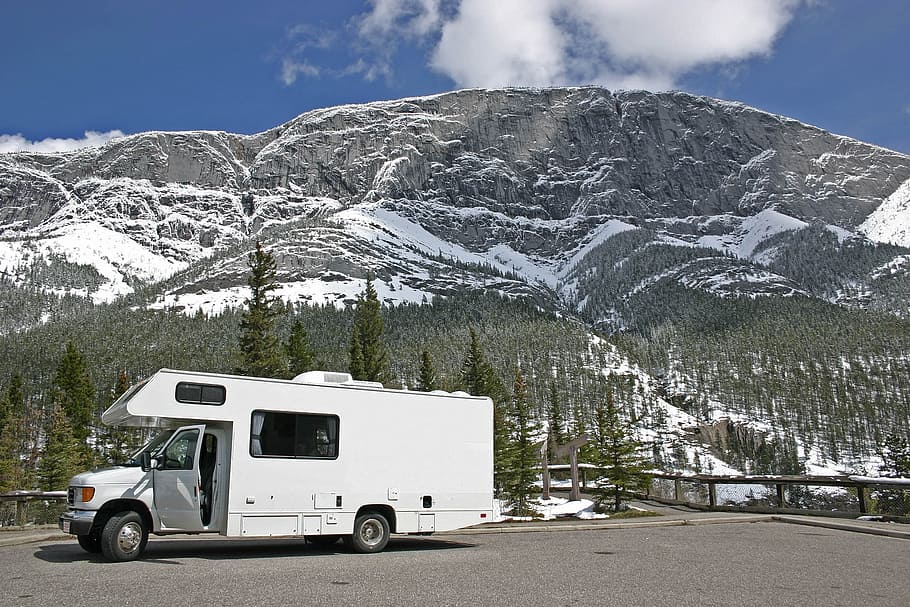
Certain models and features stand out for RVs that can manage cold weather because of their insulation, heating systems, and general design. The RV types listed below are some of the most suitable for travel in cold climates:
Four-Season RVs
These vehicles are made especially to withstand all kinds of weather, even extreme cold. They have improved insulation, thermal windows, and cutting-edge heating systems to maintain a comfortable interior temperature even in subfreezing temperatures.
Search for manufacturers who designate their products as “four-season” or “all-weather.” One of the best examples would be the Keystone Montana, which is well known for its ability to operate in all conditions.
Class A Diesel Pushers
Class A motorhomes with diesel engines are frequently better prepared to withstand the cold. Diesel engines are more fuel-efficient and have higher torque, ideal for navigating icy roads.
Class A motorhomes are suitable for colder locations because they frequently have better insulation and heating systems. The Newmar Dutch Star is one of the best Class A diesel pushers built to tackle cold weather with style.
Arctic Packages
A few RV manufacturers provide add-on “arctic packages” or “cold weather packages.” These upgrades include extra insulation, heated water lines holding tanks, and other features that guard the RV against cold weather. The Arctic Wolf series by Forest River exemplifies the Arctic package idea.
Custom-made RVs
If you want to travel in an RV during winter, you might want one designed just for you. This makes it possible for you to choose the ideal heating systems, insulation, and other features for colder climates. Custom-built RVs that meet your demands are available from Outdoors RV.
Conclusion
Although traveling in cold weather can be exciting, let’s face it, it also has challenges that call for careful planning.
Three main components of truly enjoying the cold are warm bedding, appropriate clothing, and smart use of space heaters. Surviving the cold requires some planning and a bit of caution to keep warm.
RVs are like our adventure partners, transforming our love of exploration into fantastic seasonal adventures. Whether a custom-built beauty, an all-weather champ, or a powerful diesel ride, each option can offer a special blend of insulation tech advantages and be design-savvy.
Frequently Asked Questions (FAQs)
How does a solar power camping heater keep you warm?
Solar panels convert solar energy into energy that powers the solar-powered heater for camping. This energy is fed into the heating element, creating a comforting warmth.
These heaters often use energy storage technologies like batteries to maintain a steady heat supply when the sun is bright. The solar-powered heater must be designed to meet the space’s heating needs to heat an RV efficiently.
Electricity produced by solar panels powers the heating system inside the RV. Depending on the heater’s design, this heat can be distributed in various ways, such as convection or forced air circulation. Solar-powered heaters for camping are better suited for smaller areas due to the difficulties in converting solar-generated electricity into usable heat.
While using solar energy to power various systems and appliances, use conventional heating techniques to keep the interior warm and pleasant, such as electric or propane heaters.
What are the benefits of bringing a solar-powered space heater for camping with you, and how does it compare to other heating options?
Using a solar-powered space heater when camping has several advantages. Using renewable energy first reduces your dependency on conventional power sources and reduces your carbon footprint. Solar heaters are good for the environment because they do not produce greenhouse gases while generating heat.
They also give you freedom from campsite hookups to enjoy off-grid camping without using precious resources. Solar-powered space heaters do have restrictions, though. Weather variations in solar panel output can have an impact on heating effectiveness. On cloudy days or at night, they cannot provide adequate warmth if the storage is insufficient.
Propane heaters deliver dependable, rapid heat in contrast to electric heaters, which are constant but require a power supply.
What are the factors to be considered when choosing your heating option?
The ideal way to heat a small space in an RV depends on several considerations, including efficiency, safety, accessibility, and power sources. Electric space warmers are popular for their usability, portability, and accessibility. Another option for efficient heating in areas with access to propane is propane heaters.
When choosing a heating solution, compare the room size, available power supply, safety features, and energy efficiency. Consider the heater’s power capability, insulation level, and the architecture of the RV as well.
Choose a heater that meets the safety requirements for your RV and is safe to use indoors. Proper ventilation and regular maintenance are essential for safe and effective heating.
How to use a solar-powered heater for camping?
A solar-powered heater is a pleasant and environmentally friendly camping accessory. To get the most out of it, ensure your camper has enough rooftop space for the batteries and solar panels. Look for a heater that is adept at converting energy and regulating temperatures. Of course, mobility and ease of installation are important.
Choose a model that works with your camper’s electrical setup and energy requirements. It must have changeable settings, safety precautions, a small build, and the ability to keep things comfortable without consuming much solar power. When camping, take a solar heater to stay warm without harming the environment.




